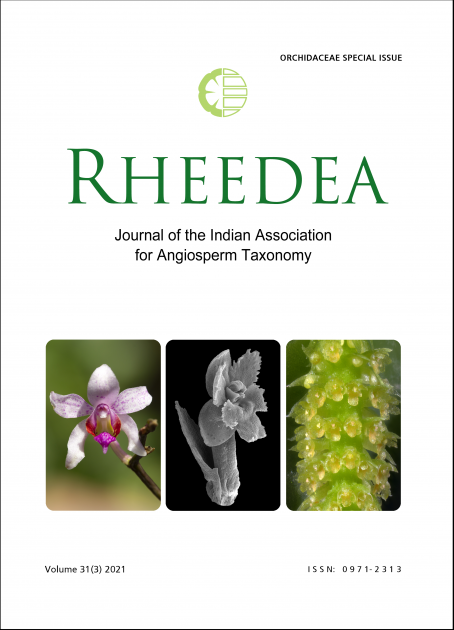A conspectus of orchid studies in India
Adit A., Jalal J.S., Koul M. & R. Tandon
Published on : 16-Oct-2021
DOI : https://dx.doi.org/10.22244/rheedea.2021.31.03.14
DownloadAbstract
Orchidaceae represents the largest family of flowering plants in India. The country has come a long way from an era of exploration phase, identification and preparation of inventories of orchids, yet it appears to be an unfinished endeavour. Besides documenting the ethnobotanical knowledge of various orchid species, in vitro tissue regeneration, micropropagation, and cell culture protocols have also been standardised for many orchid species. However, in contrast to the available diversity, ecological and molecular studies of orchids have not been conducted extensively in the country. Although above (pollinators) and below ground (fungal endophytes) mutualists have been recorded for few orchid taxa, the underlying functional mechanisms, which facilitate the processes, are unexplored. The present review offers insights into the major works that have been carried out on orchids in India, and also highlights several areas of potential research that are neglected or understudied. Most importantly, there is a need to broaden the objectives while training orchidologists. It appears that unification of subdisciplines is a priority in orchid biology in general, and conservation in particular.
